- Clone
- 10E2 (See other available formats)
- Regulatory Status
- RUO
- Other Names
- CLEC4K
- Isotype
- Mouse IgG1, κ
- Ave. Rating
- Submit a Review
- Product Citations
- publications
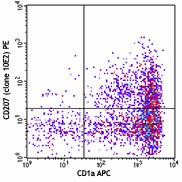
-

Monocyte-derived Langerhans cells were stimulated with recombinant human GM-CSF, TGF-β and IL-4 for 3 days, followed by an additional 3-day culture with rhGM-CSF and TGF-β. They were then stained with CD1a APC and CD207 (clone 10E2) PE (top) or mouse IgG1, κ PE isotype control (bottom). -

| Cat # | Size | Price | Quantity Check Availability | Save | ||
|---|---|---|---|---|---|---|
| 352203 | 25 tests | $134 | ||||
| 352204 | 100 tests | $317 | ||||
CD207, also known as Langerin, is a 40 kD type II transmemberane cell glycoprotein which belongs to C-type lectin with mannose binding specificity. It is predominantly expressed on Langerhans cells and induces the formation of Birbeck granules, the Langerhans cell hallmark organelle. It is also found on several other subtypes of dendritic cells, such as dermal CD103-positive dendritic cells and splenic CD8-positive dendritic cells. Langerin is generally thought to be involved in antigen processing. Recently, it has been found that HIV captured by Langerin was internalized into Birbeck granule and degraded, which results in inhibition of HIV-1 infection and subsequent transmission.
Product DetailsProduct Details
- Verified Reactivity
- Human
- Reported Reactivity
- Cynomolgus
- Antibody Type
- Monoclonal
- Host Species
- Mouse
- Immunogen
- Primary human Langerhans cells
- Formulation
- Phosphate-buffered solution, pH 7.2, containing 0.09% sodium azide and BSA (origin USA)
- Preparation
- The antibody was purified by affinity chromatography and conjugated with PE under optimal conditions.
- Concentration
- Lot-specific (to obtain lot-specific concentration and expiration, please enter the lot number in our Certificate of Analysis online tool.)
- Storage & Handling
- The antibody solution should be stored undiluted between 2°C and 8°C, and protected from prolonged exposure to light. Do not freeze.
- Application
-
FC - Quality tested
- Recommended Usage
-
Each lot of this antibody is quality control tested by immunofluorescent staining with flow cytometric analysis. For flow cytometric staining, the suggested use of this reagent is 5 µl per million cells in 100 µl staining volume or 5 µl per 100 µl of whole blood.
- Excitation Laser
-
Blue Laser (488 nm)
Green Laser (532 nm)/Yellow-Green Laser (561 nm)
- Application Notes
-
Additional reported application (for the relevant formats) includes: blocking the binding of HIV-1 to Langerhans cells1.
-
Application References
(PubMed link indicates BioLegend citation) -
- Witte LD, et al. 2007. Nat. Med. 13:367. (Block)
- Product Citations
-
- RRID
-
AB_10900993 (BioLegend Cat. No. 352203)
AB_10897451 (BioLegend Cat. No. 352204)
Antigen Details
- Structure
- 40 kD glycoprotein
- Distribution
-
Langerhans cells, dermal CD103-positive dendritic cells, and splenic CD8-positive dendritic cells
- Function
- Binding and processing antigen; capturing, internalizing and degrading HIV
- Ligand/Receptor
- Antigen containing mannose, N-acetyl glucosamine, and fucose
- Cell Type
- Dendritic cells, Langerhans cells
- Biology Area
- Immunology, Innate Immunity
- Molecular Family
- CD Molecules
- Antigen References
-
1. Valladeau J, et al. 2000. Immunity 12:71.
2. Mc Dermott R, et al. 2002. Mol. Biol. Cell. 13:317.
3. Mizumoto N, et al. 2004. J. Clin. Invest. 113:701.
4. Witte LD, et al. 2007. Nat. Med. 13:367. - Gene ID
- 50489 View all products for this Gene ID
- UniProt
- View information about CD207 on UniProt.org
Related FAQs
- What type of PE do you use in your conjugates?
- We use R-PE in our conjugates.
Other Formats
View All CD207 Reagents Request Custom Conjugation| Description | Clone | Applications |
|---|---|---|
| Purified anti-human CD207 (Langerin) | 10E2 | FC |
| PE anti-human CD207 (Langerin) | 10E2 | FC |
| APC anti-human CD207 (Langerin) | 10E2 | FC |
| TotalSeq™-A0403 anti-human CD207 (Langerin) | 10E2 | PG |
| TotalSeq™-C0403 anti-human CD207 (Langerin) | 10E2 | PG |
Customers Also Purchased
Compare Data Across All Formats
This data display is provided for general comparisons between formats.
Your actual data may vary due to variations in samples, target cells, instruments and their settings, staining conditions, and other factors.
If you need assistance with selecting the best format contact our expert technical support team.
-
Purified anti-human CD207 (Langerin)
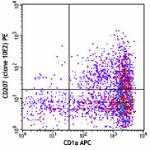
Monocyte-derived Langerhans cells were stimulated with recom... 
-
PE anti-human CD207 (Langerin)

Monocyte-derived Langerhans cells were stimulated with recom... 
-
APC anti-human CD207 (Langerin)
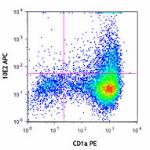
Human monocytes derived Langerhans cells (stimulated with GM... 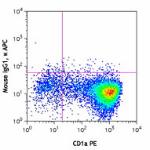
-
TotalSeq™-A0403 anti-human CD207 (Langerin)
-
TotalSeq™-C0403 anti-human CD207 (Langerin)
 Login/Register
Login/Register 










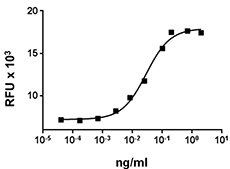
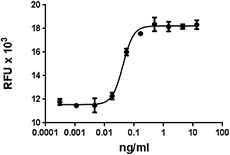
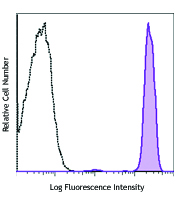




Follow Us